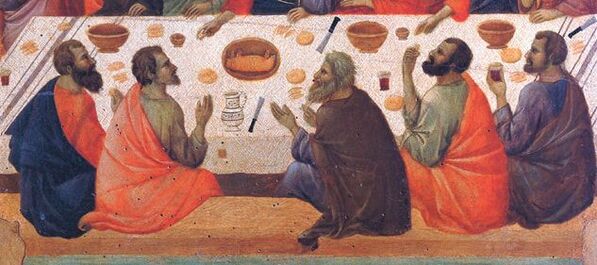In the second chapter of Galatians Paul tells the amazing story:
“When Cephas came to Antioch, I opposed him to his face … For before certain men came from James, he used to eat with the Gentiles. But when they arrived, he began to draw back and separate himself from the Gentiles because he was afraid of those who belonged to the circumcision group. The other Jews joined him in his hypocrisy, so that by their hypocrisy even Barnabas was led astray” (Galatians 2:11-13).
Paul’s stand against Peter’s hypocrisy must have been a legendary event in the early Church. Paul certainly did not skirt the issue:
“When I saw that they were not acting in line with the truth of the gospel, I said to Cephas in front of them all, “You are a Jew, yet you live like a Gentile and not like a Jew. How is it, then, that you force Gentiles to follow Jewish customs?” (Galatians 2:14).
Fortunately, Peter had the humility to accept Paul’s reprimand (something worth thinking about in itself) and changed his behavior – fellowshipping again with the Gentile believers. Clearly, he learned a valuable lesson, one which lies behind the words written in one of his own epistles years later: “Show proper respect to everyone, love the family of believers…” (1 Peter 2:17).
But this story is given in the Bible for our admonition, not Peter’s. Do we avoid certain people in the faith for any reason? Do we not fully accept other believers because of some difference in doctrine or belief? The apostle Peter made this mistake – are we above it?
We know that we are to “keep away from every believer who is idle and disruptive and does not live according to the teaching” (2 Thessalonians 3:6 and also see vs. 14), but that does not apply to believers who are sincerely trying to do God’s will. The writings of Paul and Luke, in Acts, make it abundantly clear that Gentile believers were to be fully accepted as brothers and sisters in the faith – even though they may not have had complete doctrinal understanding (Acts 15:28). This principle also applies directly to us, of course, in dealing with fellow believers of other doctrinal persuasions. We may not agree with each other on things that we consider to be important, but that does not preclude our fellowship and helping one another in the faith. Even though we may understand that principle intellectually, we must all ask ourselves whether there is some reason we are not showing up for dinner.





 RSS Feed
RSS Feed
